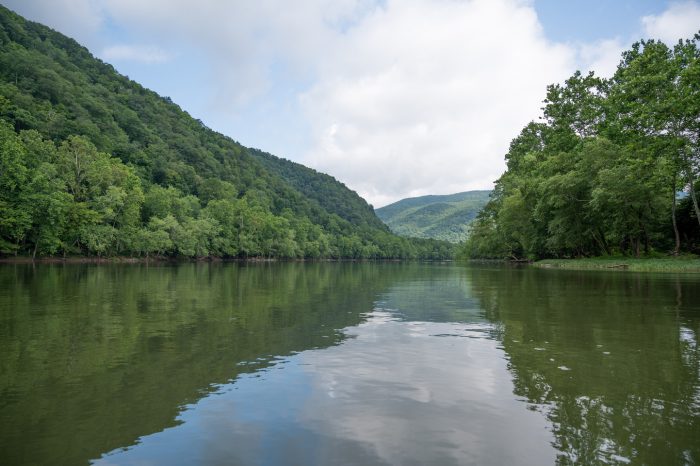With thousands of miles of streams to cast your line in, West Virginia is a great place for anglers who enjoy nature’s beauty and the thrill of feeling a tug at the end of their line. Whether you enjoy taking a boat out on the river for a day of bass fishing or prefer fly fishing for native trout in a coldwater stream, here are a few things to help you get the most out West Virginia’s incredible fishing streams and rivers.
Fishing in navigable rivers
West Virginia has three commercially navigable rivers — the Ohio, Kanawha and Monongahela. These large rivers are formed by lock and dams and provide excellent fishing opportunities for shore anglers at access sites at the base and immediately downstream of each lock and dam structure. Boat anglers can target downstream areas that are less accessible, such as creek mouths and rock bars.
Public access sites maintained by the West Virginia Division of Natural Resources make navigable rivers easily accessible to boaters. The Ohio, Kanawha and Monongahela provide some of the best catfish angling in the state. Trophy blue catfish and flathead catfish are routinely caught by anglers on these rivers, with some fish reaching 60 pounds. In addition to catfish, anglers can also target largemouth, smallmouth and spotted bass, hybrid striped bass and striped bass, walleye and sauger.
Make sure to check the current Fishing Regulations before you set out on the waters in West Virginia.
Fishing in warm water streams and rivers
Larger warmwater streams and rivers are some of the most accessible places to go fishing in West Virginia. You can cast your line from the shore or wade out into the water. Many rivers also have public access sites and are accessible to boaters with small watercraft suitable for float fishing.
Rivers such as the New, Guyandotte, Tug Fork, Little Kanawha, Buckhannon and South Branch of the Potomac all provide excellent angling opportunities for warmwater fish species. In these waters, you can target popular sport fish, such as smallmouth bass, largemouth bass, spotted bass, rock bass, sunfish, musky, walleye, channel catfish and flathead catfish.
Learn more about the different types of sportfish you can find in West Virginia’s waters.
Float trips are a great way to fish in West Virginia’s rivers and streams
One of the best things about fishing on a river is taking your boat out for a float trip. But before you put your boat into the water, make sure you are using the proper watercraft for the type of stream you want to fish.
While larger navigable rivers have concrete ramps and are deep enough for safe operation of larger boats, smaller rivers are shallower and have rocky and woody debris that can be dangerous to boaters. Many streams also have high gradients with dangerous whitewater areas. So, before you take a watercraft out on a smaller river or stream, make sure you are using an appropriate boat and that you have the skills needed to navigate more technical waters. Watercraft typically seen on smaller rivers include inflatable pontoon boats, fishing kayaks, rafts and jet boats.
Fishing in coldwater streams
West Virginia’s smaller coldwater streams are better suited for wade or shore fishing and don’t lend themselves to boating. These streams are also premier trout waters. So, if you’re looking for a challenge or enjoy trout fishing in all its forms, cast a line in one a coldwater stream. Some of the best trout waters can be found on the Cranberry River, Williams River and the North and South Forks of the Cherry River, as well as numerous smaller native brook trout streams.
These cold, clear waters support trout most or all the year, whether they are stocked or are home to native brook trout that naturally reproduce. West Virginia’s trout species include rainbow trout, golden rainbow trout, brown trout, brook trout and tiger trout, which is a prized fish that is cross between a brook and brown trout. To see a list of stocked trout waters, check the West Virginia Fishing Regulations or search for one near you on our online fishing map.
Get ready for your next fishing adventure
Before you cast your line, make sure you purchase a West Virginia fishing license and any stamps you may need. You can buy them at wvfish.com, at license retailers around the state and at your local WVDNR district office. When you purchase a fishing license, you contribute to the maintenance of fishing facilities in your community. License dollars also help fund our stocking program. So, get your license today!
Once you have a license and you’re ready to plan a trip, check out our online fishing map at mapwv.gov/huntfish. Our online map is the best way for you to learn more about fishing in West Virginia’s public lakes and streams and to search for boat access sites, trout-stocked streams and lakes and nearby amenities.

